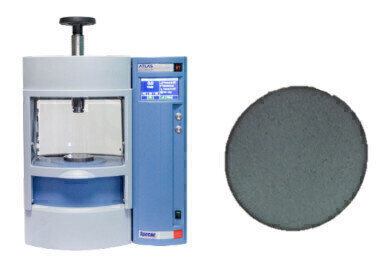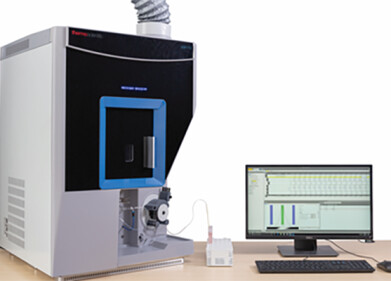-
 Accurate quantification results you can rely on using the Atlas® Press and APEX™ Quick Release Die.
Accurate quantification results you can rely on using the Atlas® Press and APEX™ Quick Release Die. -
 Figure 1: Spectral comparison for (A) heavy elements and (B) light elements in cement samples.
Figure 1: Spectral comparison for (A) heavy elements and (B) light elements in cement samples. -
 Table 1: Results of Portland Cement fundamental parameter quantification.
Table 1: Results of Portland Cement fundamental parameter quantification.
Mass Spectrometry & Spectroscopy
Comparing Pressed Pellets to Loose Powder Preparation for XRF Analysis
Jan 14 2021
Factors affecting X-ray analysis
The analytical signal in XRF spectroscopy contains two major components: 1) X-rays emitted at characteristic wavelengths corresponding to electron transitions within the sample atoms; superimposed over 2) a continuous background of X-rays scattered by the outer electrons.
The characteristic X-rays generally emerge from depths on the order of 1-1000 µm below the surface of the sample, with the depth dependent on atomic weight; lighter elements are harder to detect than heavier ones.
Particle size, mineral composition, or density can all affect the intensity of the characteristic emission peaks and increase background scattering. These effects rule out reliable quantification of sample composition [1].
Grinding sample powders to a fine particle size and pressing them into a smooth, flat pellet should reduce scattering and improve the detection of light elements.
Experimental
Samples of Type 1 Ordinary Portland Cement (Dragon Alfa, UK) were used as-purchased.
Loose powder preparation
10 g of sample was placed into an open-ended sample cup and covered with a 6 µm Mylar® film window.
Pressed pellet preparation
The sample was milled and homogenised with 20wt% of cellulose binder (SpectroBlend®) using a planetary ball mill. Pellets were pressed in aluminium sample cups at 20 tonnes using a 25 T Atlas® Power Press and a 40 mm APEX™ Quick Release Die.
Spectral acquisition
Spectra were recorded on a high-throughput wavelength dispersive XRF instrument with vacuum capability.
Results & Discussion
Heavy and light elements
XRF spectra for the loose powders and pressed pellets show clear differences (Figure 1). The lightest element Na is undetectable in the powders, while the signals from Mg, Al, and Si are much reduced. As expected, the signal from the heavier elements such as Fe is not affected.
The samples prepared as pellets show higher signal-to-noise and allow the lightest elements to be detected easily above the background. The detection of light elements is further improved by avoiding the use of thin film coverings, which allows measurement under a vacuum.
Quantification of composition
The ability to clearly detect all the elements in the sample becomes critical for accurate quantification, as can be seen in Table 1. In the powder samples, underestimation of the lighter Al, Mg, and Na elements leads to overestimation of Fe and Ca in the cement. The pellet samples result in a quantification which is within the range established by averaged laboratory experiments.
Conclusions
Loose powder sample preparation is a quick method for the detection of heavy elements, however, quantification is unreliable due to the inability to detect lighter elements.
Therefore, pellet preparation is essential for accurate quantification of sample composition. It allows detection of the lightest elements and prevents underestimation of the other light elements.
References
1. Jenkins, Ron. Quantitative X-Ray Spectrometry, Second Edition. New York : Marcel Dekker, Inc., 1995.
Preparation is the key to success
X-Ray Fluorescence spectroscopy (XRF) is sensitive to the preparation and presentation of the sample material to the instrument. Different sample preparations can yield results that are both quantitatively and qualitatively different from other methods of preparation – but how different?
Contact Specac to discover how pressed pellet sample preparation improves the quality of your XRF spectra and enables accurate quantification to be obtained.
Acknowledgement
Dr Tom Knott, XRF Geochemist at the University of Leicester School of Geography, Geology and the Environment provided the XRF spectra shown here
Digital Edition
Lab Asia 31.2 April 2024
April 2024
In This Edition Chromatography Articles - Approaches to troubleshooting an SPE method for the analysis of oligonucleotides (pt i) - High-precision liquid flow processes demand full fluidic c...
View all digital editions
Events
May 05 2024 Seville, Spain
InformEx Zone at CPhl North America
May 07 2024 Pennsylvania, PA, USA
May 14 2024 Oklahoma City, OK, USA
May 15 2024 Birmingham, UK
May 21 2024 Lagos, Nigeria



.jpg)













